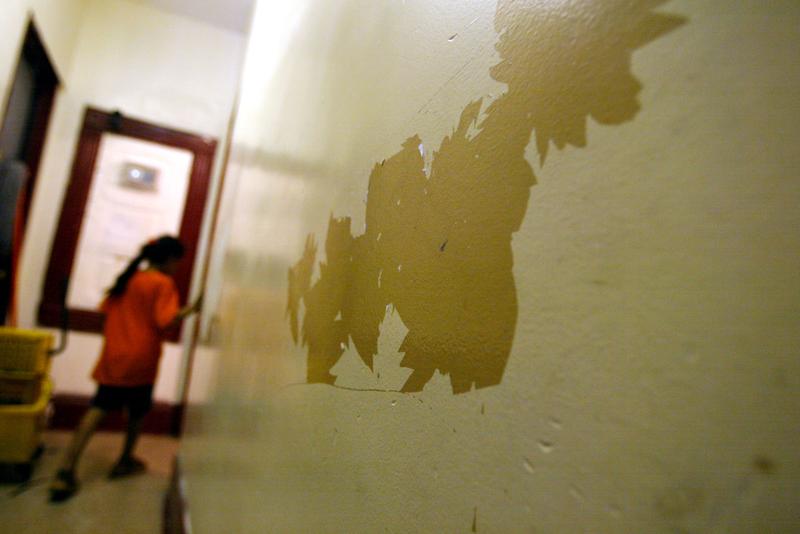
In the wake of a report revealing the New York City Housing Authority failed to inspect public apartments for lead paint, the agency has been trying to downplay the consequences. But the numbers it is using could understate the case.
The housing authority has reported that between 2010 and 2015, only 202 children out of more than 150,000 living in public housing had elevated levels of lead in their blood. (The number of cases directly linked to lead paint in the children's apartments is lower.) In New York City, that means having more than 10 micrograms of lead per deciliter of blood.
But that's an outdated standard. Five years ago, the Centers for Disease Control and Prevention changed its threshold to 5 micrograms per deciliter. Its website states, "Even low levels of lead in blood have been shown to affect IQ, ability to pay attention, and academic achievement."
(A microgram is one-millionth of a gram; a deciliter is one-tenth of a liter.)
By using an older standard, the city might be missing many children who have been exposed to lead, said David Rosner, a professor at Columbia University's Mailman School of Public Health.
"If we hide behind a number that is inaccurate, then we're missing the problem," he said.
The city hasn't released data on the number of children in public housing with blood lead levels above the national standard of 5 micrograms per deciliter. But a citywide report shows that lowering the threshold has a dramatic affect on the number of children considered at risk: seven times more children had elevated lead levels at that standard than at the city's.
City Hall spokeswoman Olivia Lapeyrolerie said the CDC standard is just a reference level at which interventions are not required. But on its website, the CDC defines 5 micrograms as "the reference level at which CDC recommends public health actions be initiated."
New York City's health code requires doctors to report blood lead levels of 10 micrograms or higher to the Department of Health and Mental Hygiene. If a child has a blood lead level higher than 15 micrograms per deciliter, then the department conducts an investigation of their home.
Lapeyrolerie said that even though it's not required under the city's code, the city conducts investigations for younger children with reports of lower blood lead levels because they are more vulnerable.
